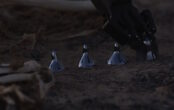[dropcap style=”font-size:100px; color:#992211;”]W[/dropcap]ee’ve always wanted to know.
Researchers at the University of Alberta announced today that they have determined the chemical composition of human urine. The study, which took more than seven years and involved a team of nearly 20 researchers, has revealed that more than 3,000 chemicals or “metabolites” can be detected in urine. The results are expected to have significant implications for medical, nutritional, drug and environmental testing.
“Urine is an incredibly complex biofluid. We had no idea there could be so many different compounds going into our toilets,” noted David Wishart, the senior scientist on the project.
Wishart’s research team used state-of-the-art analytical chemistry techniques including nuclear magnetic resonance spectroscopy, gas chromatography, mass spectrometry and liquid chromatography to systematically identify and quantify hundreds of compounds from a wide range of human urine samples.
[quote]urine analysis using
colour, taste and smell
was one of the primary
methods early physicians
used to diagnose disease[/quote]
The chemical composition of urine is of particular interest to physicians, nutritionists and environmental scientists because it reveals key information not only about a person’s health, but also about what they have eaten, what they are drinking, what drugs they are taking and what pollutants they may have been exposed to in their environment.
Analysis of urine for medical purposes dates back more than 3,000 years. In fact, up until the late 1800s, urine analysis using colour, taste and smell (called uroscopy) was one of the primary methods early physicians used to diagnose disease. Even today, millions of chemically based urine tests are performed every day to identify newborn metabolic disorders, diagnose diabetes, monitor kidney function, confirm bladder infections and detect illicit drug use.
“Most medical textbooks only list 50 to 100 chemicals in urine, and most common clinical urine tests only measure six to seven compounds,” said Wishart. “Expanding the list of known chemicals in urine by a factor of 30 and improving the technology so that we can detect hundreds of urine chemicals at a time could be a real game-changer for medical testing.”
Wishart says this study is particularly significant because it will allow a whole new generation of fast, cheap and painless medical tests to be performed using urine instead of blood or tissue biopsies. In particular, he notes that new urine-based diagnostic tests for colon cancer, prostate cancer, celiac disease, ulcerative colitis, pneumonia and organ transplant rejection are already being developed or are about to enter the marketplace, thanks in part to this work.
“This is certainly not the final word on the chemical composition of urine,” Wishart said. “As new techniques are developed and as more sensitive instruments are produced, I am sure that hundreds more urinary compounds will be identified. In fact, new compounds are being added to the UMDB almost every day.
“While the human genome project certainly continues to capture most of the world’s attention, I believe that these studies on the human metabolome are already having a far more significant and immediate impact on human health.”
Source: University of Alberta
Photo: Freedigitalphotos.net/Nuttakit

Some of the news that we find inspiring, diverting, wrong or so very right.





















